

“If you do your job right then no one will notice,” it’s been said. There may be no better exemplar of this truism than the work that goes on behind the scenes of a porn film. In the heat of an onanistic moment, the last thing you want to think about is bad design. Yet, an adult film is very much a designed object – particularly when it comes to the elaborate structural and fantasy elements involved in BDSM and kink.
As its name suggests, Kink.com is a major purveyor of BDSM and kink-related adult entertainment. Started in 1997 by Peter Acworth, then a PHD student in finance at Columbia, the company maintains about two dozen websites, each tailored to a specific audience and their tastes. Fantasies involving bondage, hog-tying, foot worship, special machinery, whips and candle wax (among other things) play out in their San Francisco studios and are broadcast to eager fans around the world.
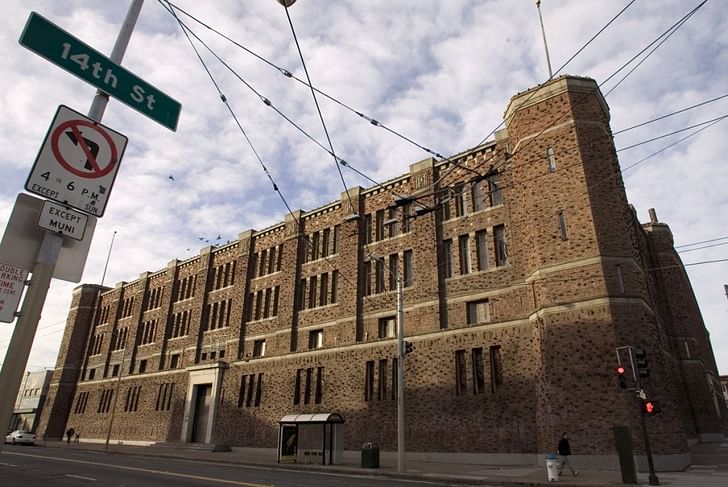
Kink.com also aspires to be something of a ‘lifestyle brand,’ with a stated mission to demystify alternative sexuality. Part of that involves public tours of its facilities, which happen to be a 1912-era, Moorish revival fortress in the city’s Mission District. Formerly the home of the San Francisco National Guard Armory and Arsenal, the towering edifice was in a state of disrepair for decades until Acworth purchased and restored it – a real estate transaction that was not without controversy.The high degree of fantasy involved in many fetishes demands a slew of machinery, sets, and props not required by most adult entertainment.
Because BDSM has connotations of non-consensual violence for many, there’s a particular onus on kink film producers to clearly demarcate their products as fictional. And the high degree of fantasy involved in many fetishes demands a slew of machinery, sets, and props not required by most adult entertainment.
I talked on the phone with Michael Stabile, an independent filmmaker and the media relations coordinator for Kink.com, about the world of design that backgrounds a fetish film.
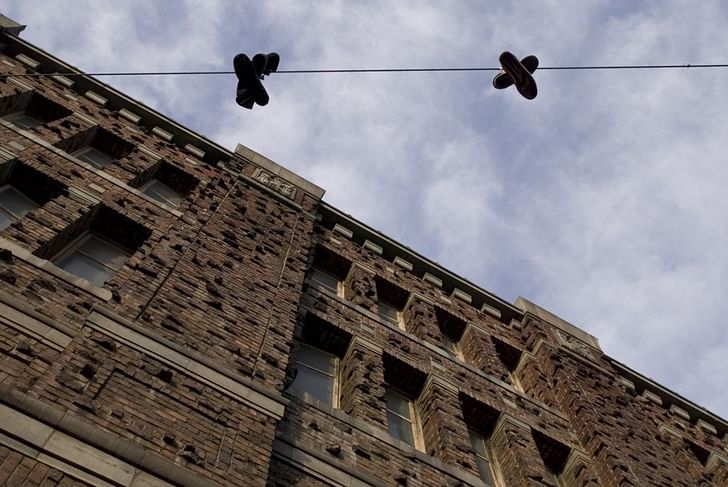
To begin, could you tell me a bit about the Kink.com audience?
Kink.com users, like a lot of adult [entertainment] users, skew male: it's about 75%-25% male-female and that varies from site-to-site. Some of our sites, like Kink University, which is more educational, tend to skew a little more heavily female. But generally 75/25 percent is a good barometer.
I would say that, in general, we have more sites that cater to heterosexual men and women but it's never as clear-cut as that [...] For example, there are a lot of gay men and lesbians who watch content that is not specifically geared towards gay men or lesbians [...]
People, particularly with BDSM, can be fairly closeted about their desires.With adult content, you want to be careful about requiring too much identifying information. People, particularly with BDSM, can be fairly closeted about their desires. So aside from actually subscribing to the site, we don't generally require people to give a lot of information. We tend to be a little more polymorphous perverse in terms of how people view themselves [rather than] trying to lock down anybody in this community to one specific sexuality or gender identity.
But I can talk to directors and they'll say, "Well based on the comments we get in forums or things like this, I would say we're 90/10 heterosexual versus gay or queer or something."
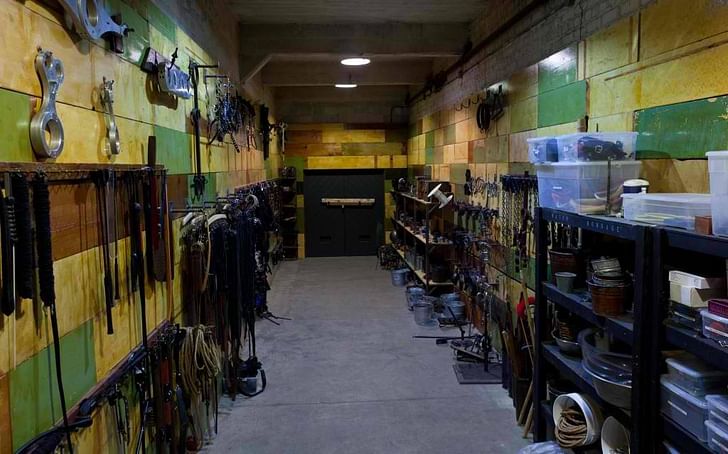
So, Kink.com is essentially a parent company for a bunch of other sites.
Right. Kink.com is the parent company and its our main domain, but there's no Kink.com site – I mean there is a site, but we don't produce content for anything called Kink.com.
There are about twenty-five [individual sites], although [that figure] varies because some are still being produced, some are not being produced, and occasionally there’ll be a third party site or something like that [...]
We have sites like Sex and Submission, which is sort of traditional male domination female submission, and then we have sites like Divine Bitches, which is the opposite. We have female wrestling and we have gay sites and trans sites and all the rest. But there are about two dozen of those in total.

Are the majority of these sites “fetish-specific,” so to speak?
We don't have very many "vanilla sites" – we have sites that are more vanilla than others but generally that's our niche.
When Kink.com started in the late '90s, it was still close to illegal to distribute content that had both bondage and sex in it. And even ten years into [the site’s history] – probably even by like 2006, which was maybe the height of DVD – you couldn't sell DVDs, distributors wouldn't pick you up if you had both bondage and sex because that was seen as a red flag for obscenity prosecutions. And so it was only able to be distributed on the internet. We built our business on that and in catering to fetishes that a traditional distributor might find… [difficult] to find an audience for.[The internet] allowed more niche tastes and more niche preferences to essentially gerrymander an audience.
I think that one thing the internet did both in terms of sexuality and then adult entertainment, in general, is that it allowed more niche tastes and more niche preferences to essentially gerrymander an audience. So you would find all the people who were really into this particular thing which seemed obscure, and you might not sell mass-market because who the heck would know, at any given retail store, that people would be into this. It allowed you to find an audience and then define content, create content specifically for them, no matter where they were in the world.

Do you perceive a noticeable increase in acceptance of kink because of this widening exposure facilitated by the internet?
I think so. Our mission statement is, at least in part, to demystify and celebrate alternative sexuality. [...] If you were to come to the Armory and go on a tour and talk to people, you'd see it's really central to what we do.
Our directors, our performers, the people that work in the IT department, are largely drawn from the BDSM and kink communities in San Francisco and in the San Francisco Bay Area. So not entirely, obviously – we are a tech company in a tech city – but it is something that everyone takes very seriously.Seeing your sexuality reflected on screen...is tremendously liberating.
I think that what we see in terms of production and also in terms of reaction from our audience is that seeing your sexuality reflected on screen – seeing that something you thought, maybe that you didn't articulate at all, you would feel something but not quite identify with it or not understand it, or something that you did articulate a desire for but that you thought you were alone with, or that you thought was shameful – seeing that reflected in media is tremendously liberating. It allows you to realize that there is a community out there, that you shouldn't be ashamed about how you feel. [...]
That's what we see a lot of times in the forums that we have on each site, where people talk about different issues related to either Kink.com or kink, in general, or just in their reactions. I think this is something where a lot of people still are very closeted about how they feel. Closeted with relationships, closeted in their communities. I think it's very easy for us in a place like San Francisco or New York or LA to feel liberated and out about our desires but there are a lot of people all over the world who, you know, don't talk about these things for this. Again, it's something that we take really seriously.

Going off that, I know that in the past, for example in the emerging gay rights movements of the 70s and 80s, there was a lot of attempts to distance the mainstream gay community from the BDSM or leather community. That BDSM was associated with perversity or danger or violence.
Yes.
I was looking at your website and I noticed that there are very specific policies and protocols in place to protect your employees and your actors – but also a clear effort to demarcate for viewers that these policies exist, that this is not sexual violence. It’s very prominent on the site. Can you talk to me about that?
So the BDSM community itself has a history and tradition of negotiating consent, in part because if you are going to be in a fantasy scene where you are saying no or protesting but that's part of the fantasy, you want to make sure that there are clear demarcations for when a scene has gotten too out of control, or where you're being pushed past your limits or where something you thought you'd be fine experimenting with is, in fact, not working for you for whatever reasons.As much as we strive for an authentic sexuality, what's going on in a particular scene is a fantasy, and it's not something that should be confused with reality
Part of our model bill of rights, our performer bill of rights, and our shooting guidelines comes from that tradition, you know, of really being explicit about, this is what I want, this is what I don't want. And so when we have every performer who comes on set, every time they come on set [they’re] given a performer checklist for the scene. And it has everything from "I like this, I don't like that. I like my hair being pulled, I hate being slapped. You can slap me on my ass, but not on my face. You can call me a slut, but not a whore." [...]
It's almost like a Chinese restaurant menu, where you're going through and you're checking this, this, and this. And that is provided to the directors, that is provided to your other performers, so that a scene is controlled, particularly, by the submissive. [...]
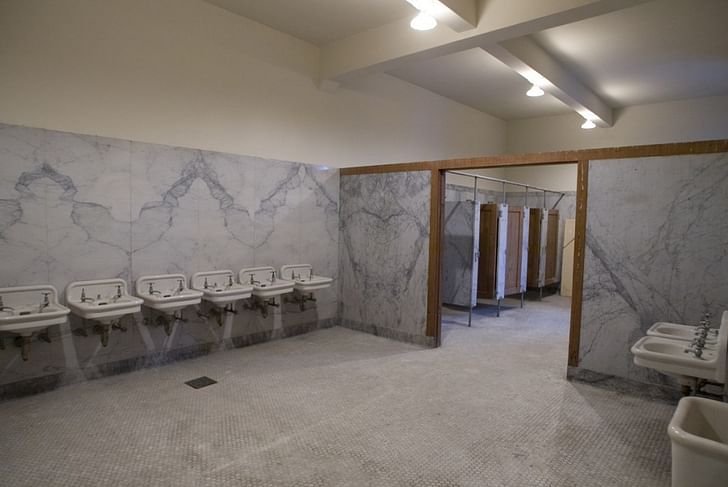
The other part is really in making sure we communicate to the end viewer that this is a fantasy. Again, it's something that, if you are fairly sexually-aware, you can watch these videos and think 'Oh yeah, of course this is a fantasy. It's adult entertainment.' But we don't know how these things get out there in the world, we want to make sure that everyone who sees it has a clear understanding of what goes on and how it went on. So what we'll do is we have interviews with the performers before and after each scene. [...]
As much as we strive for an authentic sexuality, what's going on in a particular scene is a fantasy, and it's not something that should be confused with reality. That's not something that Hollywood often has to deal with; I think there's a default presumption that people who are watching a Mission Impossible movie understand that it's fiction. And while we would like to believe that people watching adult film know that it's fiction, we want to take precautions.While we would like to believe that people watching adult film know that it's fiction, we want to take precautions.
I think the other reason, of course, is that BDSM itself is so easily misunderstood. Whether it’s politically, whether it’s in terms of criminality, in terms of press, you see quite often that BDSM is conflated with violence, with actual violence – or the consensual BDSM is – so it's important that, as we do this, people understand what we're doing comes complete with interviews prior and after, you know this is something I consented to, when, if somebody stops a shoot – a performer says, you know this is not going well, I want to take a break and reevaluate what we're doing here – we keep the cameras rolling the entire time. Any negotiations and anything that goes on are clear.
Again, this comes out in some ways of obscenity law, but also just heightened political aspects of sexuality. But to able to say, no, listen, these are things that we discuss, that we try to correct for, you know, we're constantly – I think our model bill of rights and our shooting guidelines are things that we're always looking to update and evolve. [...]

Is spatial design – of the sets and facilities, for example – employed to help enforce these safety measures?
There are certain areas of the Armory that are set off entirely for production and performers, and that can be showers or changing rooms or things like that, or just, generally, one of the floors is pretty much blocked out because, despite the fact that we're an adult entertainment company, we're a company of 100 employees.
You don't necessarily want a situation where a performer has to walk around the halls of the Armory in a towel or in a robe or something from set to set and is in contact with lots of people who aren't performers or aren't in production. So we try to block off an area where models and talent and people who are involved in production are a little bit more segmented.
Now, of course, we do shoot all over the Armory, so one of the things we do, one of the things we instituted in December and January, was making sure that if performers were going from set to set, that they could get an escort, that we just had more ways of making sure that performers were not in situations that might be vulnerable.

On the flip side of this equation, is set design used to further this sense of fantasy? That the film is fiction?
I think that one thing we do a lot of with our sets and with our productions in general is that we talk a lot about what it is we use and why we use it. That's not always on a particular shoot, although you'll see that in pre-interviews and post-interviews.
We have a channel, a separate free site, called BehindKink, where we do detail things a little more, so if somebody is watching, they understand that this is a set, this is not somebody's kitchen or a bar or things like that.
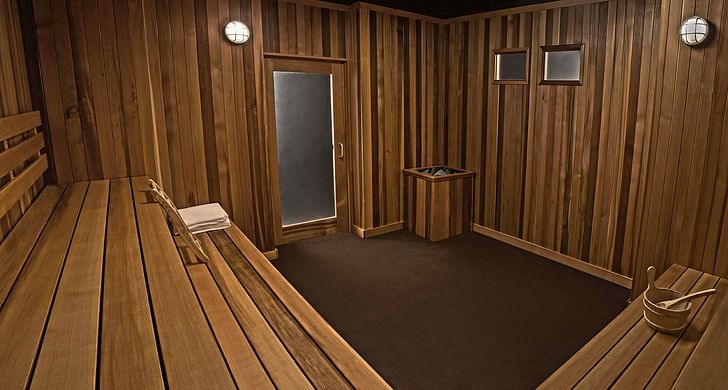
Tell me a bit more about the Armory.
The Armory is a 100 year old building [...] that was built for the National Guard in San Francisco and, until the 60s early 70s, housed the National Guard. It's Moorish-inspired architecture. It has the basement plus three floors. It has a giant drill court where Star Wars was filmed and where we now have concerts and events, community expos and things like that.
[The Armory's] a huge space – and it looks like a Moorish castle.So it involved pretty extensive renovations in order to turn it into a film set, I imagine. I know also that it was a pretty controversial move for Kink.com to buy the building in the first place.
One of the things that was a huge deal when we purchased the Armory was just concern about what was going on in there, in general. Again, the traditional concern about adult entertainment even in San Francisco, and then also the concern about BDSM being confused with actual violence.
And, also, the building itself is fairly imposing. It’s a city block by a city block almost. It's a huge space – and it looks like a Moorish castle. It's a big, imposing building with very thin windows and the doors themselves that are sort of set back and you have to go up the stairs. It's a fortress. So one of the things we did straight off when we took over the building was to open it up with public tours, to invite groups in, and it's something that we still do nearly everyday.
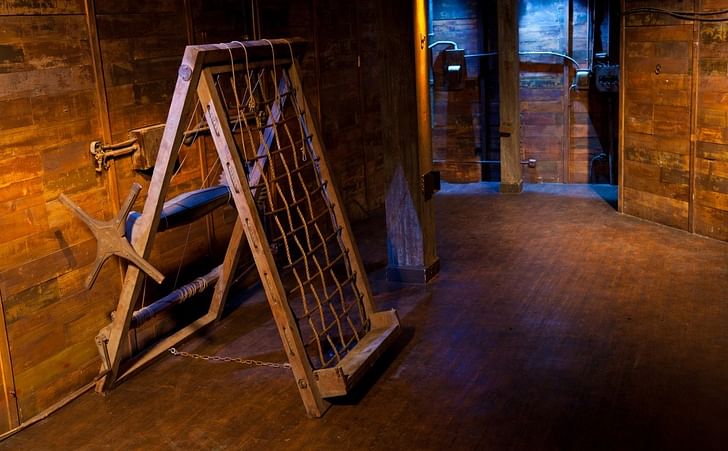
We have, sometimes twice a day, tour groups coming through and learning about the history of the building and then also what it is that we do at Kink.com. I think that [emerges] both out of the desire in our stated mission statement to demystify and celebrate alternative sexuality and then also, just in terms of our own self interest, transparency is a big priority.
In order to convince people, or let people know, or have them realize that BDSM is not physical violence, that is not non-consensual violence, that adult entertainment is consensual and enjoyable and positive, you want to have people come in and be able to talk about it, and raise questions, and ask how we do things and interact a little bit more.
I think that the more we close off that building – we certainly could have closed it off and it would have remained just as imposing and nobody would have known what went on in there and people's imaginations would run wild. "Oh this is what's happening..."
So opening it up and having people in, whoever's curious, and having them tour the facility and talk to us about what we do is crucial, both in terms of community relations and also in terms of our mission to demystify and celebrate.
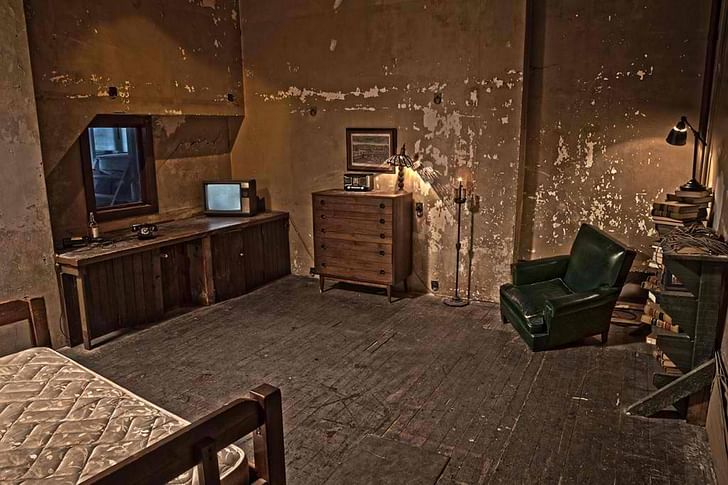
Was there an explicit connection made between, like, this is a fortress and BDSM, you know, has dungeon-y connotations?
Previous to taking over the Armory, Kink.com had been run out of a building in Downtown San Francisco [where] the interiors had been transformed into a castle-like set, so you would go in and you would see gothic arches.
When I think back on that – and it was before my time in the Armory but I had been in there – it was a little more Cinderella, I think, a little more fairy tale than the Armory is now. The Armory itself is a little bit more of an industrial space. [...] These fantasies of running essentially a BDSM Downton Abbey type thing...
The Armory had been empty for decades, nobody could figure out what to do with it, it is not well-suited for a lot, people talked about housing among other things, it was a historic building, there are limits on what you could do with it, it wasn't compliant with a lot of regulations that limited other things and it was going to cost a lot of money to renovate, no matter what you did.
When Peter Acworth, who owns Kink.com, [looked at the site] he said, "You know, this is, in many ways, really what we're looking for. The space itself really lends itself to Kink. It's an iconic building that goes along with what it is we do: it resonates heavily."
Whenever you talk to people in BDSM entertainment and also BDSM in general, there's often this fantasy of a castle that goes back – I mean, further than this – but if you look at things like Anne Rice's Sleeping Beauty series. These fantasies of running essentially a BDSM Downton Abbey type thing. I think it's something that reoccurs in BDSM literature and fantasy and the idea that Peter could take over this castle and transform it into something like that was tremendously compelling, I think, from both a personal and a professional standpoint for him.
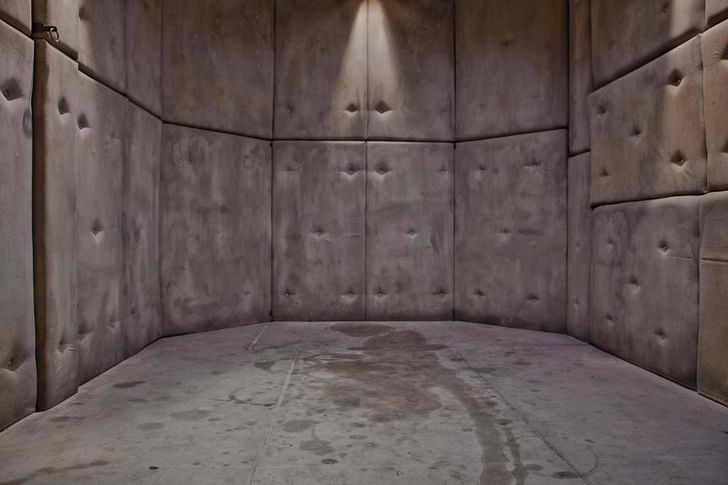
How extensively has Kink.com built in the Armory?
Obviously, we build a lot of sets within the building. I'm not sure what we were limited by – I believe we have historic landmark status. Within that, we were able to build – we also had the space, which is very hard to find in San Francisco, where you could build everything from an interrogation room to an abattoir to a boiler room – I mean some of the things were there already – we could have a bar space we could build, a speakeasy, a spaceship holding dock. All these sorts of things have gone in there at some points.
Some sets come and go – they'll build it in one day and suddenly you're in a barn – and that was something that, at one point, I think they found some old – what they now call the Roman Baths – there used to be a giant pool and bath section underneath the building. We have a creek that runs underneath the building. Some of those we have adapted to our sets – sometimes we look at things and say, oh this would be great all by itself. And then some things we just use the space to build something entirely new.
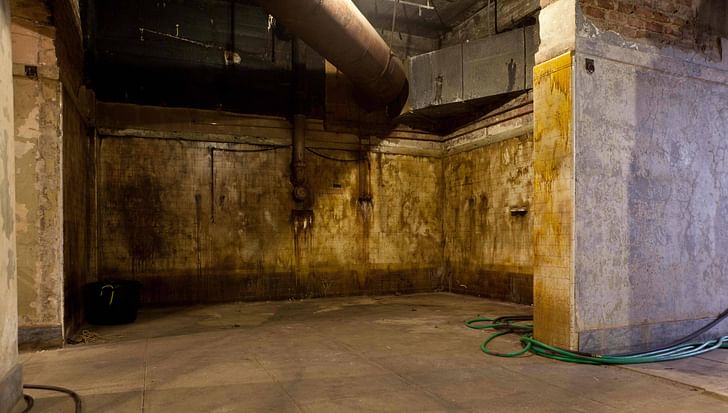
Do your employees, in particular the set designers and crew, tend to also work in mainstream entertainment?
I think it's something that's pretty common in the business, particularly in San Francisco but in LA as well, that adult entertainment provides – or historically, has provided – steady income. We have a number of people who work on staff who are independent filmmakers, outside of adult. That may mean shooting music videos or commercials, working on independent features.
I myself am a documentary filmmaker and took this job as a way to supplement that because it's not a steady income. So it's a way to keep an income, to work in something you believe in and find compelling. But it also offers the flexibility often to take off and – I've got to be on set, I'm shooting for the next month and a half, you know, you can have that flexibility often with adult entertainment because the production work is there, but there's a flexibility you may not find with a 9-5 bank job.

Totally, that makes a lot of sense. I imagine it's a bit higher paying than most jobs too.
Compared to independent film at least, yes [laughs]. And you're putting in hours working on something that does feed into your overall experience, so say, for example, even if you're setting up lights or you're the assistant director or something like that, you learn things on set that you are then able to take into mainstream work. You often have better cameras than you might in independent film, better lights, you have the freedom to experiment with things that you might not if you were just paying for this all of yourself, or if you were scrambling for financing. When I started doing documentaries, I actually borrowed cameras – not from Kink.com but from another adult company that I was close with.
I think that it's a really welcoming community. It's something that everybody is – I feel like adult entertainment is happy to see people thrive in a way that you wouldn't expect. They have the resources and, in general, I found them very open, whether it's to allowing you to promote your stuff through their networks or to lend you their equipment or things like that it's a good community for filmmakers.
Thanks Michael!
This piece is part of Archinect's special April 2016 theme, Sex. What turns you on? Our open call for Architectural Sex submissions ends April 27 – click here to submit.
Want to take a tour of the Armory? Book one here.
Writer and fake architect, among other feints. Principal at Adjustments Agency. Co-founder of Encyclopedia Inc. Get in touch: nicholas@archinect.com
5 Comments
Whats a Gimp room?
"Some of our sites, like Kink University, which is more educational, tend to skew a little more heavily female."
Sure it does...
@Nate A gimp suit, or bondage suit, "is a garment designed to cover the body completely (usually including the hands and feet), fitting it closely, and often including anchor points for bondage [...] A bondage suit is used in BDSM to objectify the wearer, or gimp, and reduce him or her to the status of a sexual toy, rather than a sexual partner." via Wikipedia
The term "gimp" comes from Pulp Fiction:
Interesting... Love that gif LOL
I do wonder if the dungeon aesthetic appeals more to men than women. If so the Gimp room is perfect!
For women, perhaps Tom Mayne is a better designer
And that is provided to the directors, that is provided to your other performers, so that a scene is controlled, particularly, by the submissive...
This, not only in sex but in all things, is one of my favorite paradoxes. I thank Agnes Martin's writing and brilliant paintings for teaching me to think this way - what a light bulb moment that was in my life!
Love the ending paragraphs especially - where he relates working on adult films and documentary films as complementary ways to inform one type of practice with another. Sort of like architecture internships, yes? Do a stint in an interior design firm, or a construction firm, or an event coordination company...they all feed a bigger creative outlook and skill set.
Block this user
Are you sure you want to block this user and hide all related comments throughout the site?
Archinect
This is your first comment on Archinect. Your comment will be visible once approved.